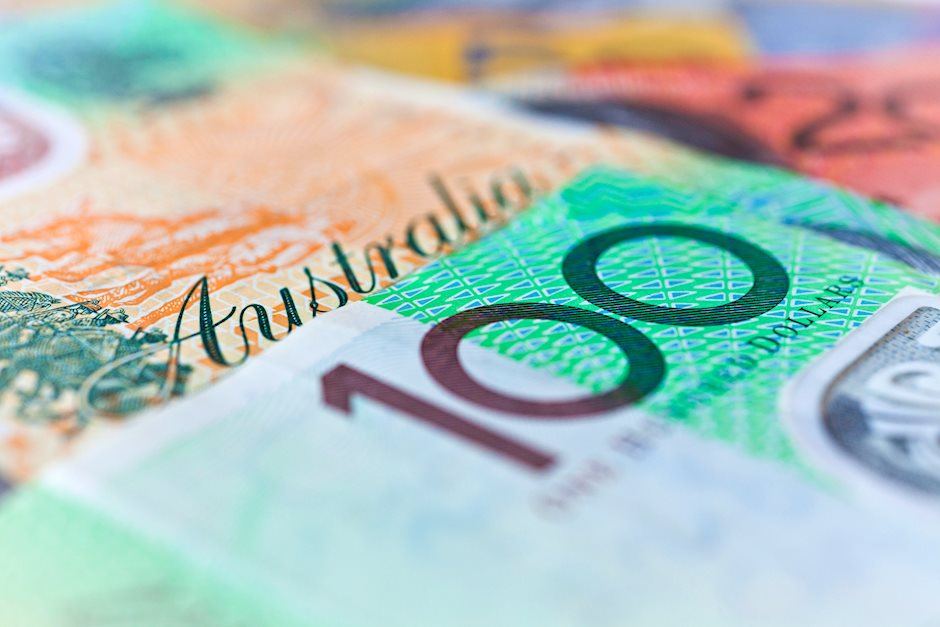Australian Dollar rises as US Dollar remains tepid due to expected bumper rate cut by Fed
- The Australian Dollar appreciates due to a slight increase in the odds of a 50 basis points Fed rate cut.
- The Aussie Dollar receives support from the RBA’s hawkish stance.
- The US Dollar faces challenges as the Treasury yields decline amid uncertainty over the scale of the Fed rate cut.

The Australian Dollar (AUD) inches higher against the US Dollar (USD) on Monday. The AUD/USD pair may appreciate further due to growing speculation that the US Federal Reserve will opt for a jumbo 50 basis points rate cut at this week’s monetary policy meeting. Traders are anticipating a release of Australian jobs data later this week to assess the health of the labor market and its potential impact on domestic monetary policy.
The Reserve Bank of Australia (RBA) has maintained a hawkish stance, with RBA Governor Michele Bullock stating that it is premature to consider rate cuts due to persistently high inflation. RBA Assistant Governor Sarah Hunter also noted that while the labor market remains tight, wage growth appears to have peaked and is expected to slow further.
The US Dollar receives downward pressure as US Treasury yields depreciate amid uncertainty over the scale of the Fed rate cut. According to the CME FedWatch Tool, markets anticipate 41.0% odds of a 25 basis point (bps) rate cut by the Fed at its September meeting. The likelihood of a 50 bps rate cut has increased to 59.0%, up from 50.0% a day ago.
Daily Digest Market Movers: Australian Dollar appreciates amid uncertainty over Fed rate cut
- The University of Michigan’s Consumer Sentiment Index rose to 69.0 in September, exceeding the market expectations of 68.0 reading and marking a four-month high. This increase reflects a gradual improvement in consumers' outlook on the US economy after months of declining economic expectations.
- China's Retail Sales grew by 2.1% year-on-year in August, slowing from 2.7% in the previous month and falling short of the market consensus of 2.5%. Given the close trade relationship between China and Australia, any shifts in China's economic performance could significantly impact the Australian market.
- China's economy weakened in August, with a continued slowdown in industrial activity and declining real estate prices, as Beijing faces growing pressure to increase spending to boost demand. This was reported by the National Bureau of Statistics on Saturday, according to Business Standard.
- The US Producer Price Index (PPI) rose to 0.2% month-on-month in August, exceeding the forecasted 0.1% increase and the previous 0.0%. Meanwhile, core PPI accelerated to 0.3% MoM, against the expected 0.2% rise and July’s 0.2% contraction.
- The former Reserve Bank of Australia (RBA) Governor Bernie Fraser criticized the current RBA Board for being overly focused on inflation at the expense of the job market. Fraser suggested that the Board should lower the cash rate, warning of "recessionary risks" that could have severe consequences for employment.
- Australia’s Consumer Inflation Expectations eased to 4.4% in September, down slightly from August's four-month high of 4.5%. This decline highlights the central bank's efforts to balance bringing inflation down within a reasonable timeframe and maintaining gains in the labor market.
- The US Consumer Price Index dipped to 2.5% year-on-year in August, from the previous reading of 2.9%. The index fell short of the expected 2.6% reading. The headline CPI stood at 0.2% MoM. Meanwhile, Core CPI ex Food & Energy, remained unchanged at 3.2% YoY. On a monthly basis, the index rose to 0.3% from the previous 0.2% reading.
Technical Analysis: Australian Dollar tests the upper boundary of the descending channel around 0.6700
The AUD/USD pair trades near 0.6700 on Monday. Technical analysis of the daily chart indicates that the pair is testing the upper boundary of a descending channel. A successful breach would signal a weakening bearish bias. Additionally, the 14-day Relative Strength Index (RSI) remains above the 50 level, suggesting a shift in momentum from a bearish to a bullish trend.
In terms of upside, a breakout above the upper boundary of the descending channel, near the 0.6700 level, could trigger a bullish bias for the AUD/USD pair. This could potentially push the pair toward its seven-month high of 0.6798 and test the psychological level of 0.6800.
On the downside, the AUD/USD pair could find immediate support around the nine-day Exponential Moving Average (EMA) at the 0.6703 level. A break below this level could reinforce the bearish bias and lead the pair to navigate the region around the lower boundary of the descending channel around the throwback support zone near 0.6575.
AUD/USD: Daily Chart
Australian Dollar PRICE Today
The table below shows the percentage change of Australian Dollar (AUD) against listed major currencies today. Australian Dollar was the strongest against the US Dollar.
| USD | EUR | GBP | JPY | CAD | AUD | NZD | CHF | |
|---|---|---|---|---|---|---|---|---|
| USD | -0.21% | -0.24% | -0.39% | -0.15% | -0.32% | -0.23% | -0.16% | |
| EUR | 0.21% | -0.09% | -0.23% | 0.03% | -0.17% | -0.07% | 0.00% | |
| GBP | 0.24% | 0.09% | -0.22% | 0.11% | -0.08% | 0.02% | 0.10% | |
| JPY | 0.39% | 0.23% | 0.22% | 0.27% | 0.15% | 0.20% | 0.19% | |
| CAD | 0.15% | -0.03% | -0.11% | -0.27% | -0.25% | -0.08% | -0.12% | |
| AUD | 0.32% | 0.17% | 0.08% | -0.15% | 0.25% | 0.10% | 0.16% | |
| NZD | 0.23% | 0.07% | -0.02% | -0.20% | 0.08% | -0.10% | 0.08% | |
| CHF | 0.16% | -0.01% | -0.10% | -0.19% | 0.12% | -0.16% | -0.08% |
The heat map shows percentage changes of major currencies against each other. The base currency is picked from the left column, while the quote currency is picked from the top row. For example, if you pick the Australian Dollar from the left column and move along the horizontal line to the US Dollar, the percentage change displayed in the box will represent AUD (base)/USD (quote).
Australian Dollar FAQs
One of the most significant factors for the Australian Dollar (AUD) is the level of interest rates set by the Reserve Bank of Australia (RBA). Because Australia is a resource-rich country another key driver is the price of its biggest export, Iron Ore. The health of the Chinese economy, its largest trading partner, is a factor, as well as inflation in Australia, its growth rate and Trade Balance. Market sentiment – whether investors are taking on more risky assets (risk-on) or seeking safe-havens (risk-off) – is also a factor, with risk-on positive for AUD.
The Reserve Bank of Australia (RBA) influences the Australian Dollar (AUD) by setting the level of interest rates that Australian banks can lend to each other. This influences the level of interest rates in the economy as a whole. The main goal of the RBA is to maintain a stable inflation rate of 2-3% by adjusting interest rates up or down. Relatively high interest rates compared to other major central banks support the AUD, and the opposite for relatively low. The RBA can also use quantitative easing and tightening to influence credit conditions, with the former AUD-negative and the latter AUD-positive.
China is Australia’s largest trading partner so the health of the Chinese economy is a major influence on the value of the Australian Dollar (AUD). When the Chinese economy is doing well it purchases more raw materials, goods and services from Australia, lifting demand for the AUD, and pushing up its value. The opposite is the case when the Chinese economy is not growing as fast as expected. Positive or negative surprises in Chinese growth data, therefore, often have a direct impact on the Australian Dollar and its pairs.
Iron Ore is Australia’s largest export, accounting for $118 billion a year according to data from 2021, with China as its primary destination. The price of Iron Ore, therefore, can be a driver of the Australian Dollar. Generally, if the price of Iron Ore rises, AUD also goes up, as aggregate demand for the currency increases. The opposite is the case if the price of Iron Ore falls. Higher Iron Ore prices also tend to result in a greater likelihood of a positive Trade Balance for Australia, which is also positive of the AUD.
The Trade Balance, which is the difference between what a country earns from its exports versus what it pays for its imports, is another factor that can influence the value of the Australian Dollar. If Australia produces highly sought after exports, then its currency will gain in value purely from the surplus demand created from foreign buyers seeking to purchase its exports versus what it spends to purchase imports. Therefore, a positive net Trade Balance strengthens the AUD, with the opposite effect if the Trade Balance is negative.
Author

Akhtar Faruqui
FXStreet
Akhtar Faruqui is a Forex Analyst based in New Delhi, India. With a keen eye for market trends and a passion for dissecting complex financial dynamics, he is dedicated to delivering accurate and insightful Forex news and analysis.


















